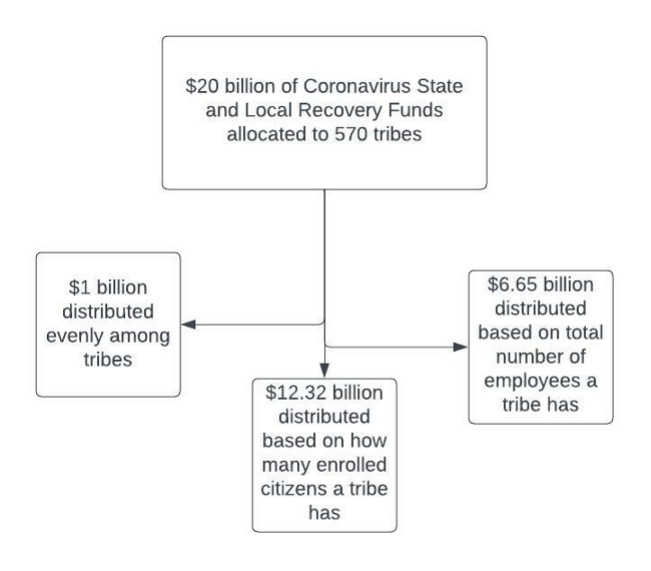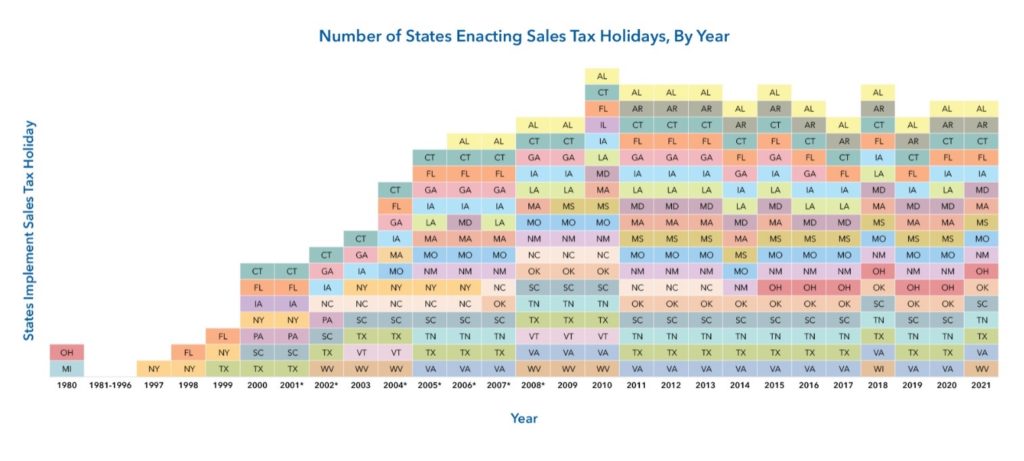By Christina Gordley
The American Rescue Plan Act (ARPA) of 2021 provided $195 billion directly to states through the Coronavirus State and Local Fiscal Recovery Fund. States are to use this assistance to:
- Respond to the negative economic impacts of the public health emergency.
- Provide premium pay for specific professions.
- Replace lost revenue.
- Invest in water, sewer and broadband infrastructure.
- Provide assistance to disproportionately impacted households and communities.
States have focused on how to best use the funds and sustain long-term economic recovery since the relief was enacted in March of 2021. Recently, the Senate Finance Committee requested the Government Accountability Office begin a review and assessment of how states have used the State and Local Fiscal Recovery Fund. Just as the impact of the pandemic has varied by state and region, the use of funds and the transparency surrounding spending has differed across the country.
Cross branch collaboration and innovation
Generally, the bicameral Joint Finance Committee is responsible for writing Delaware’s annual general fund operating budget. However, the committee is not responsible for allocating federal funds like the unanticipated funds received from the American Rescue Plan Act. In 1977, Delaware established the Delaware State Clearinghouse Committee for the coordination of federal and nonfederal grants to maximize the use of resources. The committee has a unique composition involving policymakers from the legislative and executive branches:
- The chair of the Joint Finance Committee.
- The vice chair of the Joint Finance Committee.
- The controller general.
- The director of the Office of Management and Budget.
- The secretary of state.
- The secretary of finance.
- One senator appointed by the president pro tempore of the Senate.
- One senator appointed by the minority leader of the Senate.
- One representative appointed by the speaker of the House of Representatives.
- One representative appointed by the minority leader of the House of Representatives.
The clearinghouse committee reviews and authorizes the use of all federal funds entering the state, whether for new programs recommended by the governor or formula block grants established by the federal awards. The committee reviews applications and reports submitted by individual agencies to spend federal and nonfederal grants, including ARPA funding.
Transparency, risk and oversight
Delaware’s Office of the Governor maintains a Rescue Plan Website with an extensive list of projects and initiatives funded by the State and Local Fiscal Recovery Fund. Included in the website is a brief description of each recipient program or project, the total award and the amount spent to date. As of July 26, the committee and Gov. Carney have announced a dedicated use for approximately 100 allocations totaling roughly $630 million of the $925 million received.
The website fulfills the requirement of the U.S. Department of the Treasury Compliance and Reporting Guidelines that the 2021 Recovery Plan Performance Reports submitted to the Treasury be made available on a public-facing website. Delaware goes beyond Treasury requirements to include the January and April 2022 project and expenditure reports that give a detailed breakdown of each item, category, overall amount allocated, amount spent to date and description.
The Delaware Internal Compliance Review Policy for the American Rescue Plan Act is outlined and posted on the website to “ensure proper stewardship” of the funds. The policy is designed to ensure that funds are used effectively and in compliance with federal and state regulations. An internal compliance policy addresses how entities awarding funds should rank and assess the risk of any sub-recipients. A pre-qualifying questionnaire and a formal risk analysis are provided for each project and used to evaluate the possible threat to compliance or damage to the state. In addition to regular reporting, a compliance review will be completed with the use of an outside audit as needed. The Compliance Review Policy provides a list of the various items a subrecipient should be accounting for and establishes the internal control process to set expectations for what to monitor during and after the project timeline. Establishing these guidelines in advance can help to alleviate fraud, measure performance and reduce future audit costs.
Equity and Inclusion
The unprecedented infusion of funds presents an opportunity for states to evaluate their programs and policies while developing approaches to further advance equity for all individuals and populations. States can amend or eliminate programs and policies that unintentionally create a barrier to achieving economic and health equity. For example, Delaware is using rescue plan funds to set up the Tenant Rent-Reporting Pilot Program to subsidize the cost of reporting timely rental payments to credit bureaus. Building a strong credit score is one of the keys to securing a home, vehicle ownership, personal and business loans, insurance and employment that may require a credit check. Participation in the program is voluntary and the pilot program will serve about 400 residents from disadvantaged populations across the state.
In another example, the Delaware Workforce Development Academy was created to increase the participation of women, minorities and disadvantaged individuals in the highway construction industry. Delaware is directing $100 million of ARPA support for the “Community Investment Recovery Fund” to support community centers and nonprofit organizations that provide critical assistance to individuals, families and vulnerable populations, particularly during adverse times. The grant program’s goal is to strengthen the delivery of services, grow a more equitable economy and help address systemic challenges.
Like many states, Delaware is working to ensure an equitable recovery from the impacts of COVID-19. It has utilized funds from the American Rescue Plan Act to invest in education, workforce, housing, communities and health and human services.
This story is the second in a series that will highlight the use of American Rescue Plan Act funds by state governments.
How is your state using American Rescue Plan Act funds to make an impact? You can help The Council of State Governments tell your story. Email [email protected] to let us know how your state is successfully using this funding.




